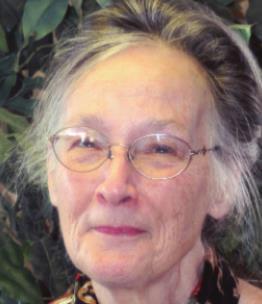`Imagine all the people’ - COVID ripples
Imagine if the entire population of Albuquerque disappeared. That means more than 568,918 people would have ceased to exist.
The Albuquerque Journal newspaper recently offered an online memorial site to honor those who have died during the pandemic Think about what those deaths mean.
One recent study estimated that each death affects nine others who are left to grieve - family members, friends, coworkers, neighbors, and others. More than four million Americans have lost a loved one in the past year.
This country has recorded more than 526,097 deaths from COVID-19 since March 2020. We are approaching a figure that equals the number of Albuquerque residents.
More than 28 million people in this country have tested positive for the coronavirus. The U.S. has the highest pandemic mortality rate of any country. We have a higher coronavirus death rate than the combined totals of Italy, Germany, Australia, Japan, the United Kingdom, Canada, and France., according to https://www.vox.com/ on Feb. 22.
Deaths in the U.S. during the past 12 months increased by more than 15 percent compared to the previous year. The year 2020 was the highest year-on-year rise in mortality for this country since 1918, which included both a global flu epidemic and the First World War. These figures do not include tens of thousands of fatalities that may have been related to the coronavirus but were not recorded as COVID-19 mortalities, such as deaths that occurred before testing became more widely available, according to https://www.nationalgeographic.com/.
The death toll forces us to confront the reality that COVID has affected some groups more than others. Most of the dead have been Americans aged 65 and older.
In March through May, people aged 80 and older had the most confirmed cases per capita, although testing for much of this time was limited. By June, that burden shifted to younger people. The summer case surge in young people was followed by a winter uptick in elderly deaths. The virus was spreading broadly in every state by the winter of 2020 and the increased transmission rate was largely attributed to people younger than age 50.
What had started as a health emergency concentrated in travelers, urban minority communities, and other crowded places (such as nursing homes and prisons) fanned out into rural areas of the country, leading to a surge in fatalities.
These deaths demonstrated how an “infectious disease became a universal issue,” said Dean Sandro Galea, Boston University School of Public Health. The extraordinary loss of life was also preventable, said Virginia Commonwealth University’s Steven Woolf, and a grim marker of “how poorly the U.S. [has] handled the pandemic.”
Research into human evolution shows that the brain is not inherently wired to make sense of large numbers; other studies show that people have become adept at suppressing trauma to cope with grief.
So, what does the loss of so many lives look like? How can we envision what more than 500,000 deaths really means?
There are 525,600 minutes in a year. Imagine one COVID-19 death per minute for almost an entire year. The line of caskets, laid end to end, would stretch for 645 miles.
More than a half a million represents nearly all the fast-food cooks in this country. Imagine the disappearance of 527,220 cooks.
There were 504,150 school bus drivers, in 2018, who were transporting students and special clients, including the elderly and people with disabilities. Imagine losing all of them.
What if we lost all U.S. Postal Service workers - approximately 496,934 career employees?
If measured in the skies, 500,000 is more than hundred times all the stars that are visible to the naked eye.
Imagine the dark emptiness.
Imagine sharing the grief of all those who have lost loved ones from this pandemic.
“Imagine” is a song where the former Beatle, John Lennon, challenges listeners to do some creative thinking He paints a general yet vivid picture of what exactly he wants them to visualize, according to www.songmeaningsandfacts.com/.

